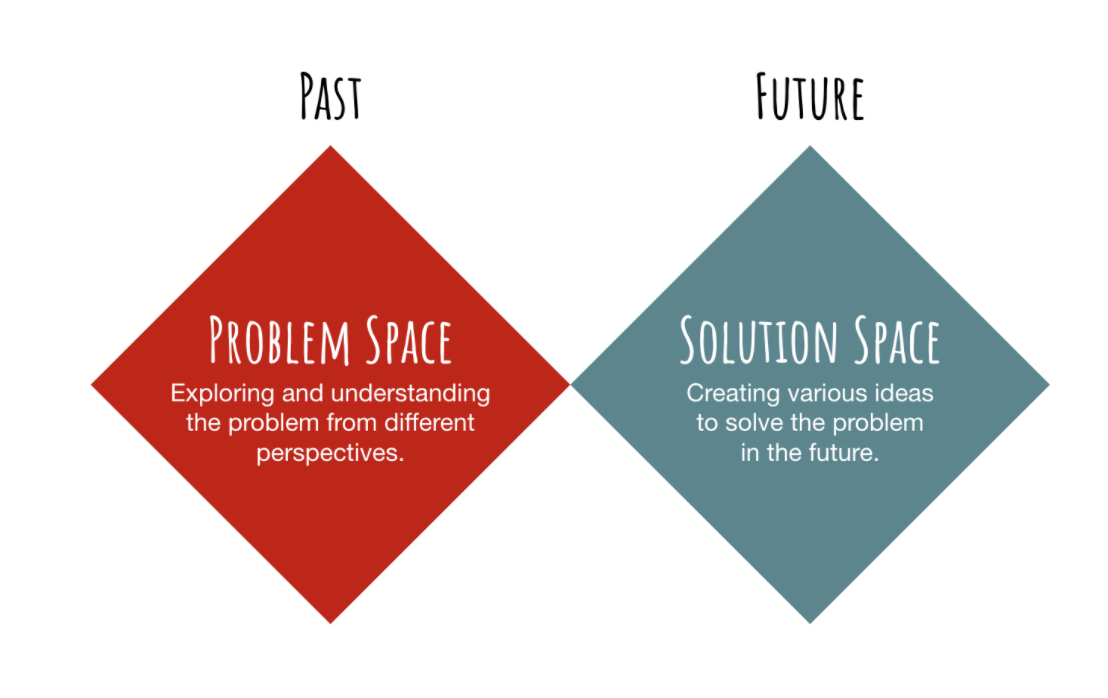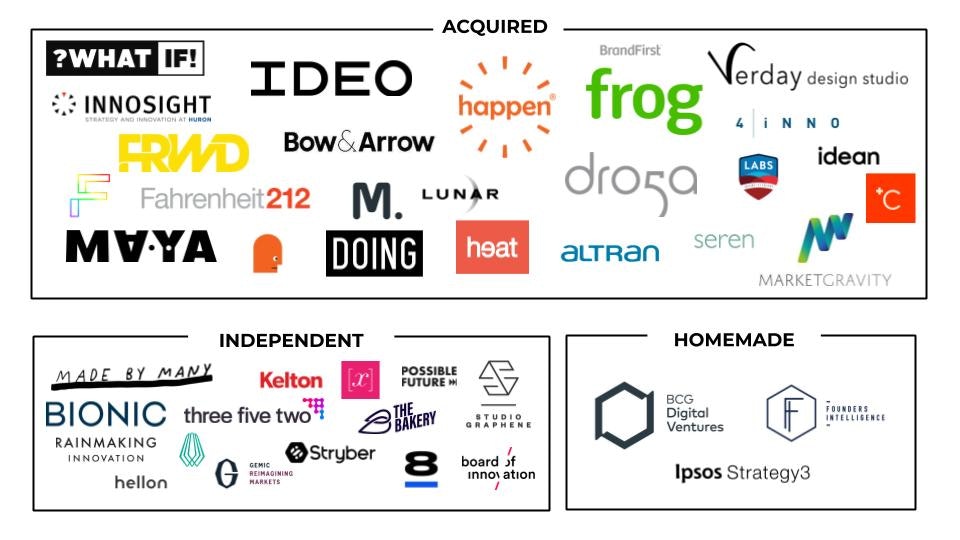Good commercial ideas thrive by addressing a problem, a pain that hurts so much, people would pay to get rid of it. This is general knowledge by now, right?
One should think so, but unfortunately, most corporates do not really understand that yet. Whenever a topic gets addressed in any innovation format, be it intrapreneurship, startup collaboration or some others, mostly topics come from the management or from an internal idea generation tool.
Take a look at the double diamond model. It distinguishes between the problem and the solution space and comes in the shape of two diamonds, since you should start really narrow, with a problem, then you broaden the spectrum by learning and opening up and finally you try to focus again on one specific thing.

But the problem is that in most cases, no one really takes the time to properly explore the problem space and therefore, it mostly gets disregarded.
So why do corporates rarely start with a problem? In this two-part series, my colleague Erik Muckenschnabel and I will address four reasons we’ve seen during our time working with global corporations.
Let’s talk about the first two reasons. Either the problem does not get observed because it is really tempting, and in many cases easier, to start with an idea that you are already very convinced about, or the non-existence of a real problem simply gets disregarded because someone “important” really wants to build something in this space. The latter is the most common phenomenon.
1. Taking the easy way
Starting to work on an idea right away is so much easier and more tempting than doing your research and really digging into an actual problem first.
But ideation is not, and never was, the first step in building a solution, especially not if intrapreneurs come together for the first time, without being familiar with the nature of the topic and with very different starting points of information. One should never brainstorm for ideas without being familiar with the environment and the customers.
Also, once someone is really convinced about their idea, in most cases there is no turning back. They are biased and very likely to ignore all signs of potential failure for as long as they can. Reducing this bias is crucial, but hard.
2. No problem? No problem!
Building something is easy, building something that people want is extremely hard to pull off. The process of building a startup or an innovative solution in most cases is fun whether you tackle a problem or not, just the outcome is different! Once you discover that there is no need for your super cool idea, the fun is over and, even if the project was forced upon you from one of the managers, you as an executor will be held responsible in case of (likely) failure.
During the process of building a product though, you can easily get tangled in tasks that keep you busy, also that build the product, but once you go out and try to sell it, you just notice that there is no need.
Modern methodologies like lean startup and others do a good job in including the customers early on and reducing the risk of building something that no one needs. Still, it is possible to neglect feedback or tailor interview outcomes to your subjective needs. And there is the problem: If you want feedback to be in your favour, this is easy to pull off. But you still won’t be getting the customers.
How to fix it
After endless sessions and programmes in which Erik and I had to deal with all the problems of having no problem to solve, we came up with a solution. It is a format called Discovery Bootcamp. I know, sounds fancy, right? But it basically brings all the people on a project together, makes them look at the problem and helps them to understand the environment and status-quo. Crucial to that is splitting up a problem into different dimensions, according to the potential stakeholder groups involved.
What we discovered is that participants mostly come extremely well-prepared and already behave like they were the founders. The knowledge, commitment, and engagement are just way higher than without it!
More importantly, they really see the project, and especially the problem, as not just another task or something they do on the side. Because they put research into it, they really immerse themselves in it. In many cases, after the Discovery Bootcamp a shift happens from “how can our company benefit from it”, to “how can we make this really work by solving this issue”.
In conclusion, I am constantly surprised by the fact that people can talk about different approaches, like lean startup, design thinking and the double diamond, but then completely disregard it. This proves again, theory is easy, practice is hard. No matter what you do, always start with the problem!
If you liked this article, check out Erik’s piece next week for the reasons three and four as well as for a more elaborate description of the Discovery Bootcamp.


